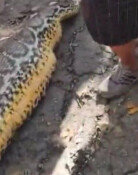[Editorial] The way to preserve cultural heritage
[Editorial] The way to preserve cultural heritage
Posted February. 09, 2001 19:33,
Cultural properties are national assets. Once they are damaged, they are irrecoverable. It is significant that the Cultural Properties Committee has decided to designate as cultural assets the Kyongju racecourse and Poongnaptosung reconstruction sites.
The committee`s decision has awakened the people to the importance of preserving cultural properties.
The two sites, where precious cultural relics of the ancient kingdoms of Shilla and Paekjae are preserved, have often been the source of controversies over proposed development. How the issue is resolved, therefore, will go a long way toward setting the direction of the nation`s cultural preservation policy. Fortunately, the council`s policy decision is expected to have a positive impact on the preservation of cultural properties in other areas.
Owing to reckless development elsewhere in the country, cultural relics have disappeared, been damaged or completely destroyed. In many cases, construction sites are chosen without adequate surveys of what cultural relics may exist there. Even local governments are damaging historical sites by launching construction projects aimed at boosting tourism.
Abandoned dolmens, which are registered as cultural relics with the World Cultural Heritage organization, can be seen throughout the country. Some of them were intended as monuments to deceased local dignitaries.
The Tabotap or pagoda in Kyongju`s Bulkuk-sa Temple, which was designated as the National Treasure No. 20, is cracked and parts of it have fallen apart. And there are many other similar stone cultural relics that are unattended. By neglecting them, we are committing unforgivable sins against the ancestors who bequeathed to us these great cultural relics.
The designation of these items as cultural properties will hopefully provide momentum for a nationwide campaign to salvage historical works that are scattered throughout the country. To this end, it is necessary to take concrete and practical steps like the enactment of a law for the preservation of ancient cities.
At the same time, the nation must take a special interest in the preservation of cultural properties throughout the entire peninsula, especially with the projected construction of the Kaesong Industrial Complex in the North and the launch of other projects in the Demilitarized Zone.
In order to effectively promote the preservation of cultural assets, measures should be taken to minimize losses on the part of the residents concerned. In the case of the Poongnaptosung site, authorities need to address complaints of infringement on private properties and take needed countermeasures. For the Kyongju citizens hoping to profit from the racecourse construction, the government needs to work out an alternative means for them to boost their earnings.




![[단독]尹 “국무위원조차 살길 찾아 떠나려…없는 얘기 한다” 진술](https://dimg.donga.com/c/138/175/90/1/wps/NEWS/IMAGE/2025/07/10/131976712.1.jpg)


